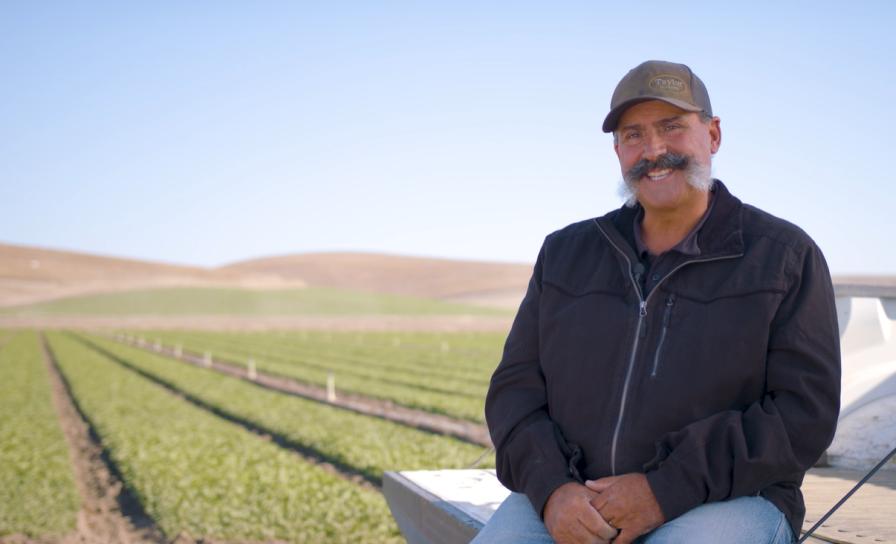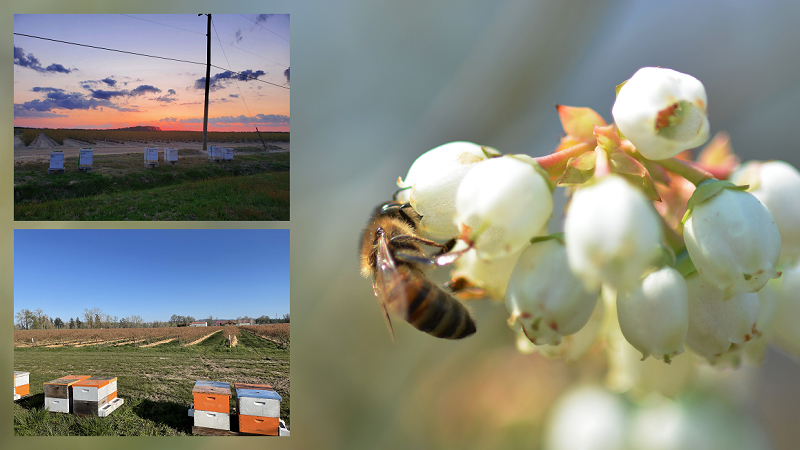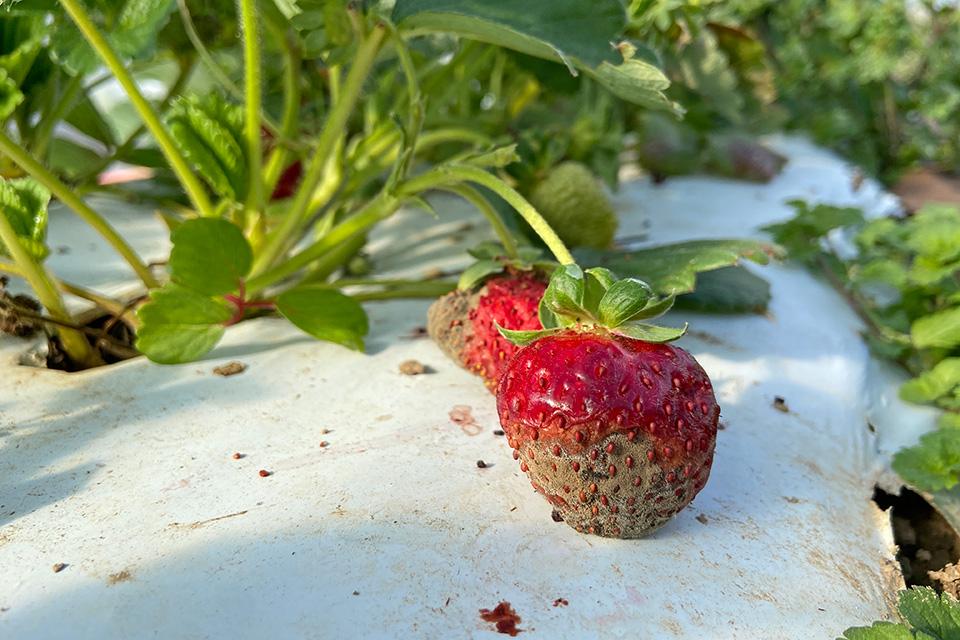Next Big Thing President Talks SweeTango, New Varieties
In this Q&A, the Next Big Thing (NBT) president Tim Byrne explains how the program was created, the process by which growers were selected, and what it means for the future of new variety introductions.
Q: Can you give a short summary of The Next Big Thing?
A: The Next Big Thing (NBT) was formed in 2006 and has been licensed by Pepin Heights Orchards in Lake City, MN, to grow and commercialize the SweeTango® apple. The co-op is made up of 45 partners located in Washington, Minnesota, Wisconsin, Michigan, New York, Quebec, and Nova Scotia. We have a lot of geography in there. In Nova Scotia, one of the partners is a co-operative, Scotian Gold Cooperative, LTD. Within Scotian Gold, there are 22 growers who are growing for the co-op. Thus, we have 67 farms across the U.S. and Canada growing SweeTango® brand apples for commercialization. NBT is composed of family owned operations. Despite the size of places like Stemilt in Washington and Fowler Farms in New York, they are incorporated, but they are family owned. That’s the nature of the NBT.
Everyone is an equity owner. It was formed under the new co-op rules in Minnesota, so that it operates a little bit like a stock equity company. The more equity you put in, or the more production rights you purchase, the more votes you have. The co-op has a board of directors that runs the operation.
There are three directors from the West Coast, which represents Washington, three from the Midwest region that includes Minnesota, Wisconsin, and Michigan, and three from the Eastern region which includes the two Canadian provinces and New York. There are nine people on the board. I am the president of the co-op, and I serve at the board’s pleasure and execute the day to day functions of the co-op. Underneath the board of directors, there are committees. We have a business development committee, which is in charge of investigating new apples, fruit varieties, or products. We have a marketing committee which directs the activities of the sales desks involved. We have a best practices committee which is in charge of undertaking and writing protocols for different testing regimens, be it thinning regimens, or fire blight, or storage, for example.
Q: Why was it necessary start such a program for SweeTango?
A: Pepin Heights was licensed by the University of Minnesota to commercialize the fruit of the Minneiska variety (SweeTango® is a registered trademark of the University of Minnesota for use on fruit of the Minneiska variety). Pepin Heights is not big enough to undertake something like this on its own, nor would we want to. There were three reasons why we felt it was necessary to start this program. First, we wanted to get some geographic diversity in this. Just like when you built a retirement portfolio. You want to have some diversity against the elements. So by working with growers in areas throughout the northern tier of the U.S. and the Southern tier of Canada, we felt like we had some protections against the weather, or rain, or lack thereof.
On that same note, we were looking to bring the product closer to the end markets. The way we set up NBT co-op, we have a packinghouse and a marketing arm in Wenatchee, WA, and in Minnesota, as well as two packinghouses and a marketing operation in New York. The way those marketing agreements are set up between the marketing desks is that they will sell north to south. They will sell in a localized drop down area. That way we can get product from any of the packinghouses to any of the markets served within a two-day truck ride. We’re trying to save transportation costs because I don’t think they’re likely to decrease as we move forward. We can also get fresher product to market in a shorter period of time.
The third element is that the local movement has really picked up a lot of traction. We have regional production areas and regional distribution centers, and can at least keep the product proximate to where people know where it’s coming from. The co-op form has also allowed us to essentially use a unified selling desk. The marketing committee gets together and discusses strategy for what markets to penetrate, what markets that we want to do heavy promotion in, what markets we need to do in-store demos at. We have price alignment, and the co-op form of governance allows us to do that.
Q: Can you briefly describe your background and how you came into the position of managing The Next Big Thing?
A: This is my 22nd year with Pepin Heights. Prior to that, I spent 12 years with a Fortune 500 company, the last five in national accounts. That company was involved in the grocery business. My background was grocery distribution and merchandising, setting up programs and promotions on behalf of products. When I left that, I met Dennis Courtier from Pepin Heights. He was beginning to grow his business from one orchard that was in production, to three orchards that were in production. He was looking for someone with a bit of knowledge on how to work their way through the grocery distribution system and the produce department.
I came on board in April of 1989 and worked in sales. I managed a PYO farm for 15 years as well. I had no formal farming background, but I did manage to take some classes and go to seminars and learn a bit about growing apples. We’ve given up that PYO orchard, and have turned our attention to growing Pepin Heights Orchard and putting together the licensing agreements, partners, and structure for NBT Co-op. The board asked me, because I was intimately involved in working with all aspects of counsel on the intellectual property rights, if I would also assume the role of non-paid president of the co-op.
Q: How were growers selected to be a part of this program?
A: A couple of different ways. We had ongoing direct business relationships with quite a few growers in Michigan. That goes back to 1995, when I first began to work with Stan Peterson, an NBT partner in Michigan who was a tree salesman. We (Pepin Heights) had decided that we were going to bet the farm on the success or failure of Honeycrisp. We borrowed money and planted Honeycrisp like crazy. Stan Peterson also had a feeling that this, Honeycrisp, was going to be a superior apple and had a chance at success. He said they had some growers in Michigan who were not flourishing in the current environment and wanted to give them an opportunity to plant Honeycrisp, which we would then take to market. Starting in 1995, we began to have growers planting Honeycrisp in Michigan. When they began to bear fruit, we brought them back over to Minnesota and marketed the fruit for them.
About a third of the people in NBT were growers we had ongoing business relationships with ten years prior to actually starting the co-op. We knew they were high-quality growers, people of integrity, people we wanted to work with. Some of the partners actually were competitors who we butted heads with to get shelf space in the retail trade. The growers like Stemilt, Fowler Farms, Applewood Orchards, these were the ones we would do battle within the marketplace. We saw they were good competitors, good marketers, and people who put out a good product. So why not have them on your team? We asked them to come along.
There are also a whole lot of growers who we got to know through industry committees and industry meetings and conferences like IFTA and USApple. We had a chance to work with them and discuss projects of this nature. We talked to those folks and got to know them. We continued to have conversations with them. We invited a few of those folks to join us at our first meeting where we laid out the mission of the co-op, what the financial commitment was, and what our marketing plan was.
The last group came by recommendation from folks we worked with, who were competitors, or we had gotten to know throughout the industry. They said it would be really good for NBT to have these people attend the meeting and see if they’d be interested in taking advantage of this opportunity. We invited 47 people to the initial meeting, and 46 showed up, and 45 are partners today.
Q: Will you be looking for new growers to join the co-op?
A: It’s called a managed variety for a reason. We need to make sure SweeTango® has traction in the market before we go out and do something like expand the grower base or the production base. This is really about measuring twice and cutting once, and that’s an under-employed concept in the produce business. It is really one of the true aspects of management here. We need to make sure we have a handle on the storability, the quality, the way to grow the fruit, the regions it grows best in, and we need to make sure it has traction with the consumer, and the consumer is willing to pay a price that sustains the grower. We will not increase production until we’re satisfied we have all those areas covered. We will not dilute the return to the grower through overproduction or substandard fruit entering commerce.
Q: What has been the consumer/retailer feedback so far?
A: Bear in mind we have now one point on a graph. Our hopes are high. Here in the Midwest, it was a bit of a mob scene when we released the few apples we had in the retail stores. We manned six three-hour demos during the first week of availability and sold the stores out of product at all those demos. That’s home field advantage. It’s a Minnesota variety, and these were in Minnesota. The broader test is what happened on the West Coast, and what happened in the East. Our West and East coast selling partners Stemilt and Fowler Farms reported very brisk sales, and follow-ups with retailers that had the product last year indicated that they were very satisfied with the margin they had and the velocity out of the store. We will continue to do more work to create demand for this product going out the front door of the retailers. We also have several direct farm marketers within the co-op who sell it on their farms or at farmers markets. The response when they were hand selling the variety was overwhelming. We’re confident and hopeful, but don’t have enough info to say it’s a slam dunk yet.
Q: Describer the process by which direct marketers in Minnesota got involved in the program?
A: In Minnesota, when we made our licensing agreement with the University of Minnesota, both the University and Pepin Heights agreed it was critical that any apple farm in the state of Minnesota have access to growing and selling SweeTango. They do have to pay an enduring royalty for the use of the trademark. But they can plant trees, sell them on their farm and at the market, deliver direct to their grocery stores, or sell them direct to other farmers within the state of Minnesota who might not have production yet. We have more than 100 growers in the state of Minnesota who have been licensed to grow SweeTango. The Minnesota Apple Growers Association has about 115 state members. The uptake has been significant in Minnesota. We have Minnesota growers wanting to know if they can plant more trees. Many of those who originally planted 50 or 100 trees have re-upped for 300 or 400 more because the consumer response at their location was so great. We want to see that.
Q: What about growers who do not have access to SweeTango?
A: The nature of breeding programs and other releases going forward is that the financial realities dictate that the breeding programs have to have some sort of ongoing revenue stream. I think you’re seeing bits and pieces of that in Minnesota and in Washington, and soon to be in New York, releases out of those breeding programs. There needs to be some sort of enduring revenue stream for these breeding programs to come out with these new apples. The University of Minnesota, had they not had a successful licensing agreement on this, might have been paring down the apple breeding program like they’ve done in some other breeding programs. You can see it as Michigan State University. You see what’s happening to their Extension program.
Having said that, how would I respond to the growers who do not have access to managed varieties currently? I would ask them to take a peek at their business model and see if they would be willing to take the risk. Partnership in NBT co-op requires the growers to put up about $200,000 in risk capital in total when you consider the equity partnership and the planting and land, irrigation, etc, with no guarantees. I think the growers need to see if they could afford to do that or would want to do that. Secondly, I think that the industry needs to be creative and possibly take similar approaches with different varieties. We have been working on a plan to do a licensing program for direct farm marketers. We think that could be a good idea, and we would like to push that forward. We’ve been working with a couple other industry folks on that. So far the response has been lukewarm. As a consequence, it’s idling in neutral right now. But I think that’s one way it’s going to happen. If it’s going to happen at all, it will be in a managed fashion.
Q: Do you see more variety introductions going the managed route in the future?
A: Yeah, there’s really sort of a land rush mentality currently. People are licensing varieties that may or may not be successful. I think there will be some that will be successful. I think a majority will cost growers money. We don’t know which ones those are yet, as many haven’t been commercially introduced. But there’s going to be more of them entering the food chain in the next few years. When this settles out in 10 or 15 years, there will be a new way. I’m not sure what that will be yet but there is a limit to how many successful managed varieties you can have in a marketplace unless you want to recreate the marketing scenario where you’re doing exclusive arrangements with certain retailers. I don’t think this is in the best interest of growers or the industry because you become beholden to a retailer.
What does this do for growers in states that do not have a breeding program? Ohio has a wonderful grassroots breeding program called the Midwest Apple Improvement Association. We’re members of that and have told a lot of people about it. MAIA has a lot of very innovative people doing interesting research into genetics. Their focus is to give direct farm marketers some exciting varieties. It’s about keeping your nose in the air and staying on the trail.
Q: Are there any lessons from the introduction of Honeycrisp?
A: We learned a lot from Honeycrisp. We learned that if you get great apples in people’s mouths, they’ll tell other people about it. When they tell other people, especially when you have alpha shoppers who like to talk about it, that word of mouth message is huge. Secondly, you have to wear out some shoe leather. You have to go to stores and demo the product. We went to many places throughout the country demonstrating the product when it came out.
There’s no question that having direct farm market access to the fruit lifts the awareness of the product. But we have to continue to reach out to the consumer. Most of our programs and media work and PR will be direct to consumer. We want to hand consumer demand to a retailer before we land the product in the back door of their stores. We want to make sure it will go out the front door and, hopefully, generate repeat sales. Our activities will be a lot of in-store demos, social media, end-user interaction. That’s how we’ll try to get the fruit going out the front door.
Q: How will consumers know where to go to get access to SweeTango?
A: There will be a place for that. We have a website and a Facebook page, both of which are being updated. We are devoting resources from the co-op for that. We retain a professional agency to help us with that kind of content. We will have a Facebook account, a Twitter account, and a website which will be updated regularly. Those kinds of interactive points with consumers are really critical. How long will Twitter and Facebook be the main information channels? Not sure, but right now it’s amazing, and we have to use them. Fortunately, the media relations firm are young folks and they’re in tune with this stuff. It was overwhelming with this apple on the social media sites. The buzz it created was phenomenal.
Q: Your preference: Honeycrisp or SweeTango?
A: My dad taught me how to balance a checkbook, so right now, Honeycrisp is my favorite. But my mom used to make good food, and when I’m eating an apple, I think SweeTango has a more complex flavor profile than Honeycrisp. From a culinary standpoint, I would choose SweeTango. But from an accounting standpoint, it’s tough to beat Honeycrisp. They’re both great apples, and I think that is one enduring point of this conversation. I don’t know if the numbers reveal it yet, but the more good apples presented to consumers in good condition, the more fresh apples people are going to eat. We have a great supply of high-quality apples out in the marketplace today. I hope that people will respect the culinary qualities of these apples and not do a disservice to them or consumers by trying to sell poor quality apples in the marketplace at discounted prices or selling an apple that isn’t made it be stored year round and trying to force it into the marketplace long past its prime. Those kinds of activities have cost the apple industry in the past and hopefully, we all learned lessons from that.










